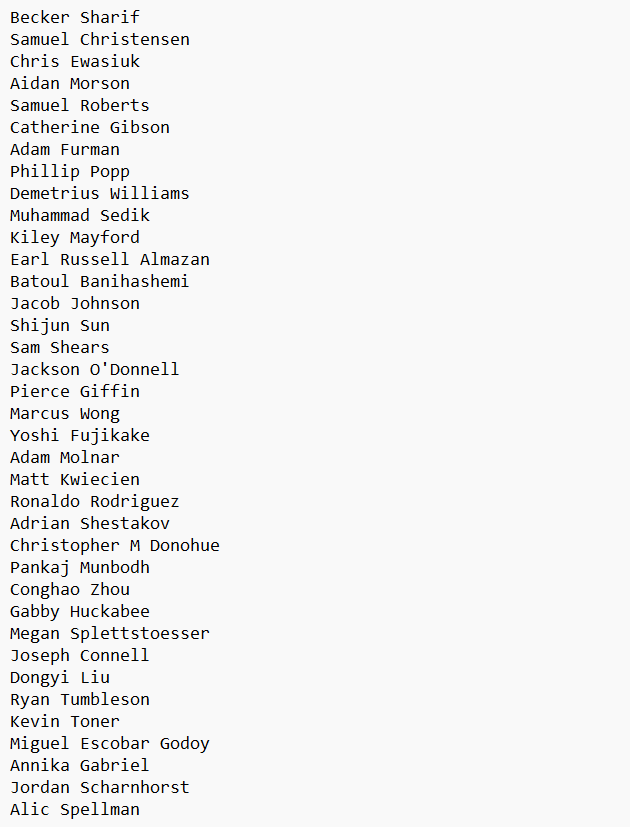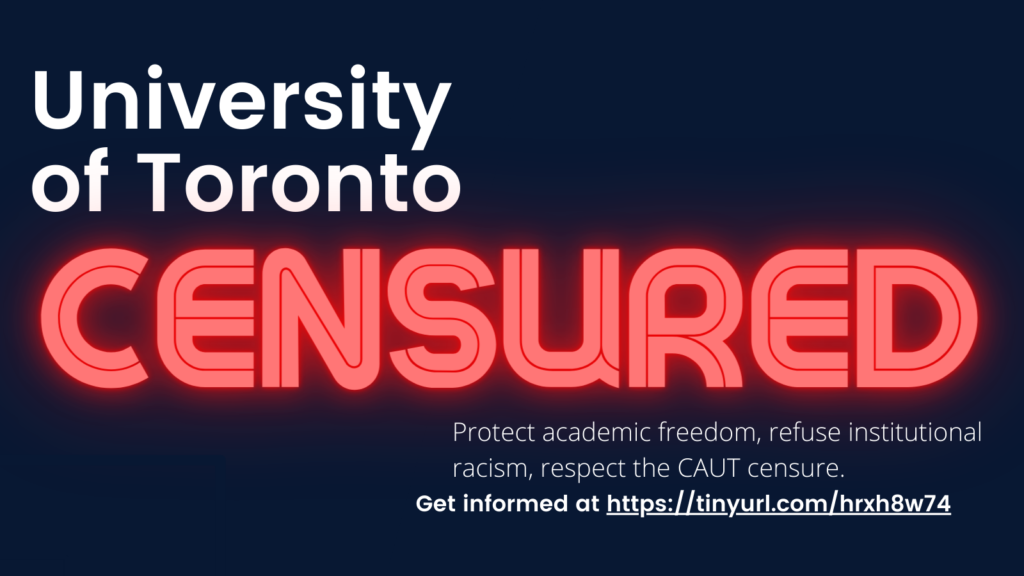We, graduate students of the Stanford Applied Physics and Physics departments, stand with the Palestinian people in their fight for liberation and refuse to be complicit in the ongoing occupation and genocide perpetrated against them.
1. Background/Context
For over 100 years, Palestinians have suffered under Zionist military occupation, starting with the 1917 Balfour declaration, solidified with the 1948 Nakba (during which 750,000 Palestinians were ethnically cleansed from their homes), and further entrenched in the following 75 years of intensifying occupation, apartheid, and genocide [1]. Today, we are witnessing yet another horrifying escalation of the Zionist colonial project: since October 7th, Israel has relentlessly and deliberately terrorized the Palestinian people in Gaza. Its atrocities include killing over 34,000* people, displacing over two million, and systematically starving and withholding medical aid from the entire civilian population of 2.5 million people, half of whom are children – a war crime known as collective punishment [2]. Countless more war crimes have been documented already, including attacks upon hospitals, refugee camps, and places of worship [3], the targeting of journalists and medical personnel [4], and the use of banned weapons such as white phosphorus [5].
On October 16th, 2023, Palestinian Trade Unions put out an urgent call for international solidarity with Palestine [6]. The call to action states, “Palestinian trade unions call on our counterparts internationally and all people of conscience to end all forms of complicity with Israel’s crimes — most urgently halting the arms trade with Israel, as well as all funding and military research.” As workers whose research labor is deeply entangled in the U.S. military-industrial-academic complex which is backing the Zionist genocide in Gaza, this statement is our response to their call.
* This number comes from the official Gaza Health Ministry county. However, due to Israel’s systematic destruction of all hospitals/health infrastructure in Gaza, this official count is likely much lower than the actual death toll. This count also does not include the thousands who are missing and buried under the rubble.
2. Stanford’s Complicity
Since its creation, the Zionist state’s military has been heavily supported by the United States. By last year, the U.S. had given a total of $158 billion (non-inflation-adjusted) in bilateral assistance (most of which is in the form of military assistance) and missile defense funding to Israel [7]. Since 2016, Israel has received an annual $3.8 billion in military aid and missile defense from the U.S. [7]. Since October 7th, Joe Biden has approved a total of $247.5 million in weapons sales for Israel’s genocide in Gaza, in addition to over 100 Foreign Military Sales (FMS) to Israel [8]. The House of Representatives recently approved an additional $26 billion in military aid [9]. As a result of Israel’s U.S.-backed genocide in Gaza, the stock prices of some of the largest military contractors like Raytheon and General Dynamics are soaring [10].
Stanford University is deeply entrenched in this business of war. While the details of its 35 billion dollar endowment aren’t publicly available, its financial and academic ties to companies such as HP and Lockheed Martin are undeniable. The former provides data services to the Israeli military and prison systems used to uphold apartheid across Palestine. The latter is infamously the United States’ largest weapons manufacturer and has manufactured many of the missiles used by Israel in Gaza.
Beyond its financial investments, Stanford received over $75 Million in research funding from the U.S. Department of Defense in 2022 alone [11]. $17.5 Million of research funding went directly into the Physical Sciences [12], with $7.8 million going to Physics and Applied Physics research. Stanford Physics labs have also received at least $140,000 in research funding directly from Northrop Grumman Corp and $280,000 from Lockheed Martin Corp [13]. For a more complete breakdown of funding received by Stanford Physics and Physics Independent Labs by the U.S. military and private war profiteers, see Table 1.
3. Physics and War
The widespread funding of physics research by the U.S. military and private war profiteers is not coincidental – it is directly tied to a long history of physics research being used to advance military technology. The integration of physics research into the U.S. war machine began in World War I and solidified in World War II with the Manhattan Project (from which the DOE National Laboratories, including SLAC, emerged). Despite witnessing the horrors caused by nuclear weapons, physicists have continued to funnel their academic labor into the machinery of war. Throughout the Cold War, physicists contributed to mass nuclear proliferation in the name of “national security”, playing a major role in destabilizing the world and motivating imperialist proxy wars in the Global South. Physicists have contributed to the development of anti-submarine and ballistic missiles, cryptography, radar detection, and more, and breakthroughs in physics (such as the laser) have in turn motivated ongoing excessive military spending through programs like Reagan’s Strategic Defense Initiative. A large focus in current physics research is quantum information and computing. This is at least in part due to the high military interest in quantum computing technology for data security and artificial intelligence [16]. The latter has been increasingly used by the Israeli occupation forces to surveil and massacre Palestinians in Gaza [17].
Conducting research that is funded by the U.S. military and private war profiteers will never be morally neutral. The U.S. military is rooted in settler militias that displaced and massacred the Indigenous people of this land en masse. It continued this legacy through imperial wars in Vietnam, Korea, Afghanistan, Iraq, and more. Now, with the U.S. providing instrumental military support to Zionism to enact genocide in Gaza, the U.S. military is once again inextricably linked to the genocide of Indigenous people, driven from their land and murdered en masse by a settler colonial state. It is not possible for us in the physics community to accept ongoing military funding without bearing moral responsibility for the destruction that the U.S. military-industrial-academic complex has unleashed in the world. We have an urgent duty to reject the ties between physics research and U.S. militarism.
4. Our Pledge
We, the Stanford Physics and Applied Physics graduate students, represent the future of our field. We unequivocally demand an end to Stanford’s complicity in the Israeli settler colonial regime. We join the Students Against Apartheid in Palestine (SAAP) [18] in calling for Stanford to divest its money from complicit companies and industries, and end all academic partnerships with corporations and institutions fueling occupation and genocide in Palestine.
Additionally, we pledge
- To withhold all academic labor benefitting militarism. This includes divesting our labor from research projects funded by the U.S. military and private military contractors.
- To refuse to work for the U.S. military as well as private weapons/weapons adjacent industries both for internships and in post-graduation careers.
- To refuse to work for or with companies complicit in Israeli occupation and genocide for both internships and post-graduation jobs, especially those specifically listed in the Palestinian-led BDS (Boycott, Divest, Sanction) campaign.
- To heed the Palestinian call for an academic and cultural boycott of Israel, following the Palestinian Campaign for the Academic and Cultural Boycott of Israel (PACBI) [19] guidelines.
We call on Stanford faculty to disclose their funding sources and support their students in withholding their academic labor. We also ask them to consider the ethical implications of their research and join PACBI [19]. We call on academic workers everywhere to withhold academic labor benefiting militarism, occupation, and genocide.
5. UCSC and Resources
If you are looking to organize within your own department, we highly recommend reading “UCSC Astronomers Reject Researchers’ Complicity with the Genocide of Palestine“. As part of this impactful statement, the UCSC graduate students put together several documents with resources and organizing advice. Beyond this, we recommend reaching out to your local SJP or FJP (Students/Faculty for Justice in Palestine) chapters.
6. Closing
This statement comes over half a year into the raging genocide in Gaza. We are grieved and enraged at the horrifying range of atrocities that the people of Gaza have experienced in this time span, as well as in the prior decades of siege and occupation. We also see clearly that despite its mass slaughter and forced starvation of the Palestinians in Gaza, Israel has failed to achieve any military or political gains. Instead, it has only become increasingly isolated on the global stage, with several countries severing diplomatic ties, while global solidarity with Palestine has reached historic levels. We wholeheartedly believe that Palestine will be free, from the river to the sea, within our lifetimes. Free Palestine.
Sephora Ruppert, Graduate Student Worker, Physics
Rupini Kamat, Graduate Student Worker, Physics
Elena Corbae, Graduate Student Worker, Applied Physics
Shintaro Fushida-Hardy, Graduate Student Worker, Mathematics
Anonymous Graduate Student Worker, Applied Physics
Sydney Erickson, Graduate Student Worker, Physics
Anonymous Graduate Student Worker, Physics
Anonymous Graduate Student Worker, Physics
Erin Fleck, Graduate Student Worker, Applied Physics
Anonymous Graduate Student Worker, Physics
Nicole Ticea, Graduate Student Worker, Applied Physics
Anonymous Graduate Student Worker, Physics
Anonymous Graduate Student Worker, Applied Physics
Anonymous Graduate Student Worker, Physics
Anonymous Graduate Student Worker, Physics
Anonymous, Graduate Student Worker, Applied Physics
Sara Irvine, Graduate Student Worker, Applied Physics
Jered Zhang, Graduate Student Worker, Applied Physics
Tori Ankel, Graduate Student Worker, Physics
Ocean Zhou, Graduate Student Worker, Applied Physics
Paris Franz, Graduate Student Worker, Applied Physics
Neelanjan, Graduate Student Worker, Mechanical Engineering
Eesh Gupta, Graduate Student Worker, Applied Physics
Anonymous Graduate Student Worker, Physics
Cindy Wang, Graduate Student Worker, Applied Physics
Viraj Manwadkar, Graduate Student Worker, Physics
Sophie Allen, Graduate Student Worker, Sociology
Matiwos Mebratu, Graduate Student Worker, Physics
Tara Dacunha, Graduate Student Worker, Physics
Anonymous Graduate Student Worker, Physics
Anonymous Graduate Student Worker, Physics
Martin Grassl, Graduate Student Worker, SLAC
Benjamin Dodge, Graduate Student Worker, Physics
Sam Robison, Graduate Student Worker, Applied Physics
David Monteserin Narayana, Graduate Student Worker, Religious Studies
Abby Pan, Graduate Student Worker, Physics
Hephzibah Akinleye, Graduate Student Worker, Physics
Liam Herndon, Graduate Student Worker, Chemical Engineering
Cindy Wang, Graduate Student Worker, Applied Physics
Anonymous Graduate Student Worker, Chemistry
Vidushi Bansal, Graduate Student Worker, Chemical engineering
Sarah, Graduate Student Worker, Physics
Anonymous Graduate Student Worker, Physics
Anonymous Graduate Student Worker, Applied Physics
Javan Tahir, Graduate Student Worker, Applied Physics
Anonymous Graduate Student Worker, Applied Physics
Anonymous Graduate Student Worker, Physics
Emma Simmerman, Graduate Student Worker, Applied Physics
Danial Shadmany, Graduate Student Worker, Physics
Miriam Moore, Graduate Student Worker, Physics
Haley Stueber, Graduate Student Worker, Physics
Anonymous Postdoctoral Fellow, Physics
Daniela de Angeli Dutra, Postdoctoral Fellow, Biology
Jesse Goldstein, Research Staff, “Natural Capital Project, Woods Institute”
Vyoma Sahani, Staff, Radiology
Anonymous Staff, Physics
McKayla Roberts, Supporter
Anonymous Undergraduate, Physics
Anonymous Undergraduate, Physics
Gabriela Rincon, Undergraduate, Physics
Anonymous Undergraduate, Physics
EJ Daniels, Undergraduate, Physics
Sathya, Undergraduate, Physics
Sophia, Undergraduate, Psychology
Marc Soong, Undergraduate, Statistics
Mira Banks, Undergraduate, Physics
Nupur Kapadia, Undergraduate, Physics
Lucas Imren, Undergraduate, Physics
Anonymous GSB SO, GSB
Anoop, Alum, Computer science
Leif Erickson, Alumni
Stanford Against Apartheid in Palestine (SAAP), Club/Organization
Black in Physics @ Stanford, Club/Organization
Table 1: Physics Research Funding according to Stanford 2023 Sponsored Projects Report [14]
| Physics Department | Ginzton Lab | Geballe Laboratory for Advanced Materials (GLAM) | Hansen Experimental Physics Lab (HEPL) | |||
| Military Funding | ||||||
| Air Force: | $687,671 | $1,144,727 | $715,978 | $241,012 | $2,789,388 | |
| Army: | $1,245,921 | $541,091 | $544,135 | $2,331,147 | ||
| Navy: | $304,872 | $1,636,211 | $111,633 | $2,052,716 | ||
| Military Funding subtotal: | $7,173,251 | |||||
| Private War Profiteer Funding | ||||||
| Lockheed Martin Corporation: | $17,999 | $283,061 | $301,060 | |||
| Intel Corporation: | $233,657 | $233,657 | ||||
| Naval Research Laboratory: | $3,966 | $3,966 | ||||
| Northrop Grumman Systems Corporation: | $141,525 | $141,525 | ||||
| Private War Profiteer Funding subtotal: | $680,208 | |||||
| Total | $2,238,464 | $3,340,028 | $949,635 | $1,325,332 | $7,853,459 | |


 Science for the People express our support for Dr. Valentina Azarova and for the Canadian Association of University Teachers’ (CAUT)
Science for the People express our support for Dr. Valentina Azarova and for the Canadian Association of University Teachers’ (CAUT)